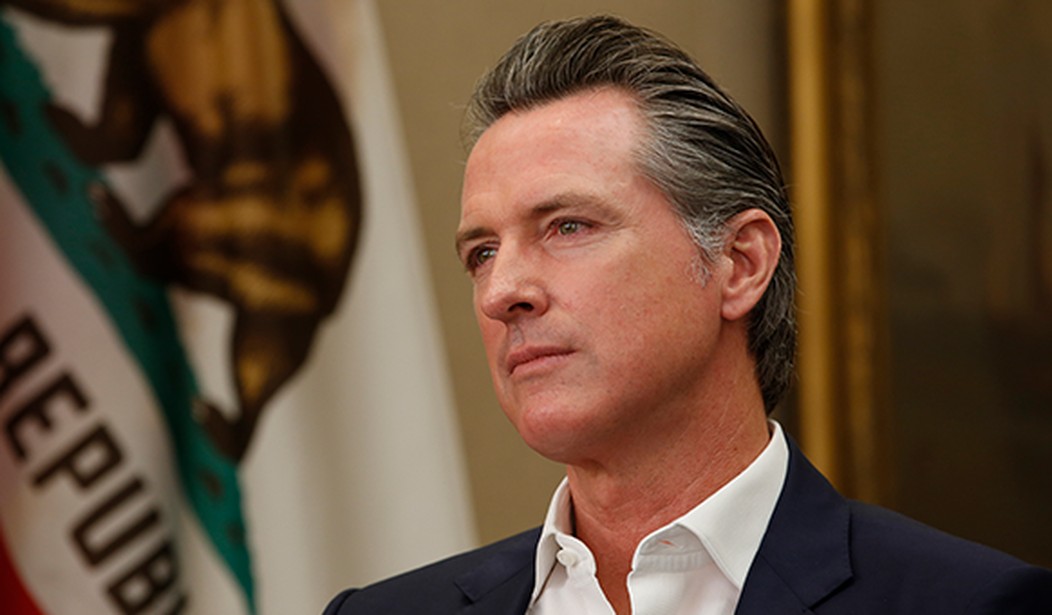On Friday night, a federal judge struck down California’s decades-long ban on “assault weapons,” ruling that the ban violates the Second Amendment as understood under the precedents of District of Columbia v. Heller (2008) and United States v. Miller (1939).
“Under no level of heightened scrutiny can the law survive,” U.S. District Judge Roger Benitez wrote, claiming that the California statutes banning “assault weapons” are “arbitrary and capricious.” He issued a permanent injunction that takes effect in 30 days. Attorney General Rob Bonta (D-Calif.) announced he would appeal the decision.
Gov. Gavin Newsom claimed that the ruling “is a direct threat to public safety and innocent Californians.” The governor also cited one of the more colorful parts of the ruling, a comparison between a Swiss Army knife and an AR-15.
“Overturning CA’s assault weapon ban and comparing an AR-15 to a SWISS ARMY KNIFE is a disgusting slap in the face to those who have lost loved ones to gun violence,” Newsom tweeted. “This is a direct threat to public safety and innocent Californians. We won’t stand for it.”
Overturning CA’s assault weapon ban and comparing an AR-15 to a SWISS ARMY KNIFE is a disgusting slap in the face to those who have lost loved ones to gun violence.
This is a direct threat to public safety and innocent Californians. We won’t stand for it. https://t.co/feL5BABTXa
— Gavin Newsom (@GavinNewsom) June 5, 2021
Recommended: Supreme Court Takes Up First Gun Case in 10 Years
Yet Benitez’s comparison is not as outrageous as Newsom suggests. In the ruling, Benitez notes that Californians already own hundreds of thousands of “assault weapons” under the state’s definition, and that the definition in the law is rather arbitrary. These and other points make the Swiss Army knife comparison far more reasonable than it appears at first blush.
“Like the Swiss Army Knife, the popular AR-15 rifle is a perfect combination of home defense weapon and homeland defense equipment. Good for both home and battle, the AR-15 is the kind of versatile gun that lies at the intersection of the kinds of firearms protected under District of Columbia v. Heller, (2008) and United States v Miller, (1939). Yet, the State of California makes it a crime to have an AR15 type rifle. Therefore, this Court declares the California statutes to be unconstitutional,” Benitez wrote.
The judge noted that the legacy media twists the facts on gun ownership.
“One is to be forgiven if one is persuaded by news media and others that the nation is awash with murderous AR-15 assault rifles. The facts, however, do not support this hyperbole, and facts matter,” he wrote. “Federal Bureau of Investigation murder statistics do not track assault rifles, but they do show that killing by knife attack is far more common than murder by any kind of rifle. In California, murder by knife occurs seven times more often than murder by rifle.”
In 2019, for example, assailants murdered 252 people in California with a knife, while criminals murdered only 34 people with some type of rifle. “A Californian is three times more likely to be murdered by an attacker’s bare hands, fists, or feet, than by his rifle,” Benitez noted.
The judge noted that California appears to define “assault weapon” in terms of accuracy under fire.
Under § 30515(a), a rifle is labeled an “assault weapon” if it is one of three principal types. The first type is a semiautomatic centerfire rifle that does not have a fixed magazine but has one of the following prohibiting features: a pistol grip that protrudes conspicuously beneath the action of the rifle, a thumbhole stock, a folding or telescoping stock, a grenade or flare launcher, a flash suppressor, or a forward pistol grip. The second type is a semiautomatic centerfire rifle that has a fixed magazine able to hold more than 10 rounds. The third type is a semiautomatic centerfire rifle that has an overall length of less than 30 inches.
“The mechanical design features that identify a rifle as a California ‘assault weapon,’ it is argued, tend to help a person shoot the rifle more accurately under pressure,” Benitez explained.
Recommended: SHOCKING New Study Shows Just How Much the Media Is in the Tank for Gun Control
Benitez noted that the plaintiffs in the case — the San Diego County Gun Owners Political Action Committee, California Gun Rights Foundation, Second Amendment Foundation, and the Firearms Policy Coalition — argue that better accuracy “is a better condition for all lawful uses, i.e., a more accurate gun is better for everyone. After all, responsible gun-owners worry about the ending point of every round fired. If shooting in self-defense, a home defender wants every round to hit only attackers.”
Benitez noted that Attorney General Bonta argued that better accuracy makes a weapon more dangerous. “According to the Attorney General, ‘assault weapons enable a shooter to fire more rounds rapidly in a given period with greater accuracy, increasing the likelihood that more individuals will be shot and suffer more numerous injuries.’ The implied context is a mass shooting.”
Yet even in a mass shooting, more accuracy may not result in fewer victims.
“A less accurate rifle in the hands of a mass shooter may very well result in different victims, but not necessarily less victims. On the other hand, in the self-defense context, which seems to be more common, taking accurate shots at attackers is vitally important for the innocent victim. While the state ought to protect its residents against victimization by a mass shooter, it ought also to protect its residents against victimization by home-invading criminals,” the judge argued.
Yet Bonta’s court filings do not reflect “a goal of preventing violence perpetrated against law-abiding citizens in their homes.”
The judge also noted that “the ‘assault weapon’ epithet is a bit of a misnomer. These prohibited guns, like all guns, are dangerous weapons. However, these prohibited guns, like all guns, can be used for ill or for good. They could just as well be called ‘home defense rifles’ or ‘anti-crime guns.'”
The judge noted that California’s “arbitrary and capricious” ban on “assault weapons” appears rather ineffective.
“Even in California, despite being banned for 20 to 30 years, according to the State’s own evidence, there are 185,569 ‘assault weapons’ currently registered with the California Department of Justice,” he noted. “According to the State’s evidence, a 2018 California Safety and WellBeing Survey reports 4.2 million adult Californians personally own a firearm. And Californians own an estimated 19.9 million firearms. According to this survey, of the 19.9 million firearms in the state, assault weapons make up 5% or approximately 1,000,000.”
Benitez also noted that since the original ban in 1989, California has amended the definition of “assault weapons” multiple times, in an apparent effort to disarm citizens.
“Like Victor Hugo’s Inspector Javert relentlessly searching for Jean Valjean, California continues to amend its statutes to prohibit more and more firearms,” he wrote.
While the Swiss Army knife comparison may seem jarring, it illustrates an important principle. The attorney general appears unable to conceive of “assault weapons” as instruments of home defense, rather than tools in the hands of a mass shooter. Accuracy under pressure does not necessarily make a gun more dangerous — in lawful circumstances, accuracy makes a weapon safer. Not only is the term “assault weapon” a misnomer, but singling out more accurate firearms for a ban may actually make many situations more dangerous. Bonta seems utterly blind to that possibility.
Recommended: Biden’s ATF Nominee Wants to Ban ‘Assault Weapons’ and His Definition Is Terrifyingly Broad…
This ruling is a key win for the Second Amendment, but Bonta and Newsom are likely to challenge it vigorously.









Join the conversation as a VIP Member